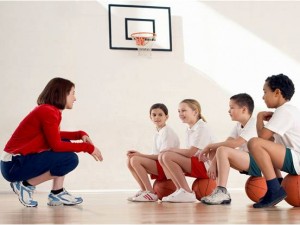Tips for Physical Education Teaching and Curriculum Strategies

Physical education teaching is an integral part of the educational process and contributes to the physical, intellectual, social and spiritual development of every student. The mission of physical education in schools is the development of autonomous, lifelong learners who readily participate in meaningful physical activity on a regular basis.
A healthy body is a wealthy person, as the saying goes. Physical Education teaching occupies an important place in our contemporary world. Now that obesity and inactivity are on the increase, it is imperative that the importance of physical activity is imparted and the habit is inculcated in the coming generation.
The International standard practice for Physical Education states that the goal of physical education programs is to produce students who have the knowledge, skills, and confidence to enjoy a lifetime of healthy physical activity. To be effective in teaching physical education, schools should carefully examine their teaching strategies and curriculum to best encourage students to go down this path.
Instructions
-
1
Planning Physical Education Activities
Physical Education courses should be planned to include every student in the school. As a P.E instructor or an administrator, you need to implement activities which cater to a wide selection and in which everyone can participate.
This will call for different plans and lessons for different levels and students with special needs. The purpose behind your planned activities should be to make the students feel healthy, useful and confident.
One important consideration here would be to remove physical punishments from your policy. A lot of institutions give out physical punishments as part of their disciplinary actions, which further dissuade students from actively taking part in such activities. -
2
Importance of Physical Education Teaching
Studies show a positive link between regular physical activity, enhanced self-concept and quality of life. Through physical education programs in schools, teachers can educate and excite students about pursuing active, healthy lifestyles.
Teachers can also help students realize the benefits of fitness activities and understand the concepts they will use to develop personal programs. In addition, teachers can guide students to develop the knowledge, skills and attitudes they will need to maintain healthy lifestyles.
Through physical education programs, students will understand the importance of living what they have learned. Generally, it is recognized that physical training builds body fitness and physical and emotional wellbeing.
Physical Education teaches students how to improve their health, be confident, move ahead untiringly and face the challenges in life head on. It also helps them be resilient, make decisions and promote healthy practices. -
3
Examples of Physical Activities
- Rolling
- Balancing
- Sliding
- Jogging
- Running
- Leaping
- Jumping
- Hopping
- Dodging
- Games/Sports -
4
How to apply Physical Activities in teaching
- Use teaching strategies that cause students to evaluate their choices inside and outside of school.
- Employ a strength based curriculum and include lessons on healthy diet and exercise.
- Have students perform self-assessments of their daily activities.
- Students can monitor their overall physical activity on a chart to include in their assessments.
- Discuss the daily work-out regimen of your students’ favorite sports, music, and movie stars to show how people must work hard to maintain their health.
- Emphasize healthy examples over popular examples because some industries promote unhealthy choices such as starving oneself or steroid use as being acceptable. -
5
Curriculum Strategies
- A reliable, valid, and content meaningful curriculum will provide a variety of activities to develop gross motor skills in physical education class.
- Gross motor skills include command over major muscle groups, which can be provided by kicking or catching a ball.
- Curriculum strategies to consider are organization and assessment. Organize your units of study to cover all the national standards each year.
- Assess your students periodically to see if they understand the purpose of physical education, and to measure improvements in their motor skills and physical activity.
- To be most beneficial, be sure the curriculum stresses ways to improve social skills and focuses on cooperation instead of competition



